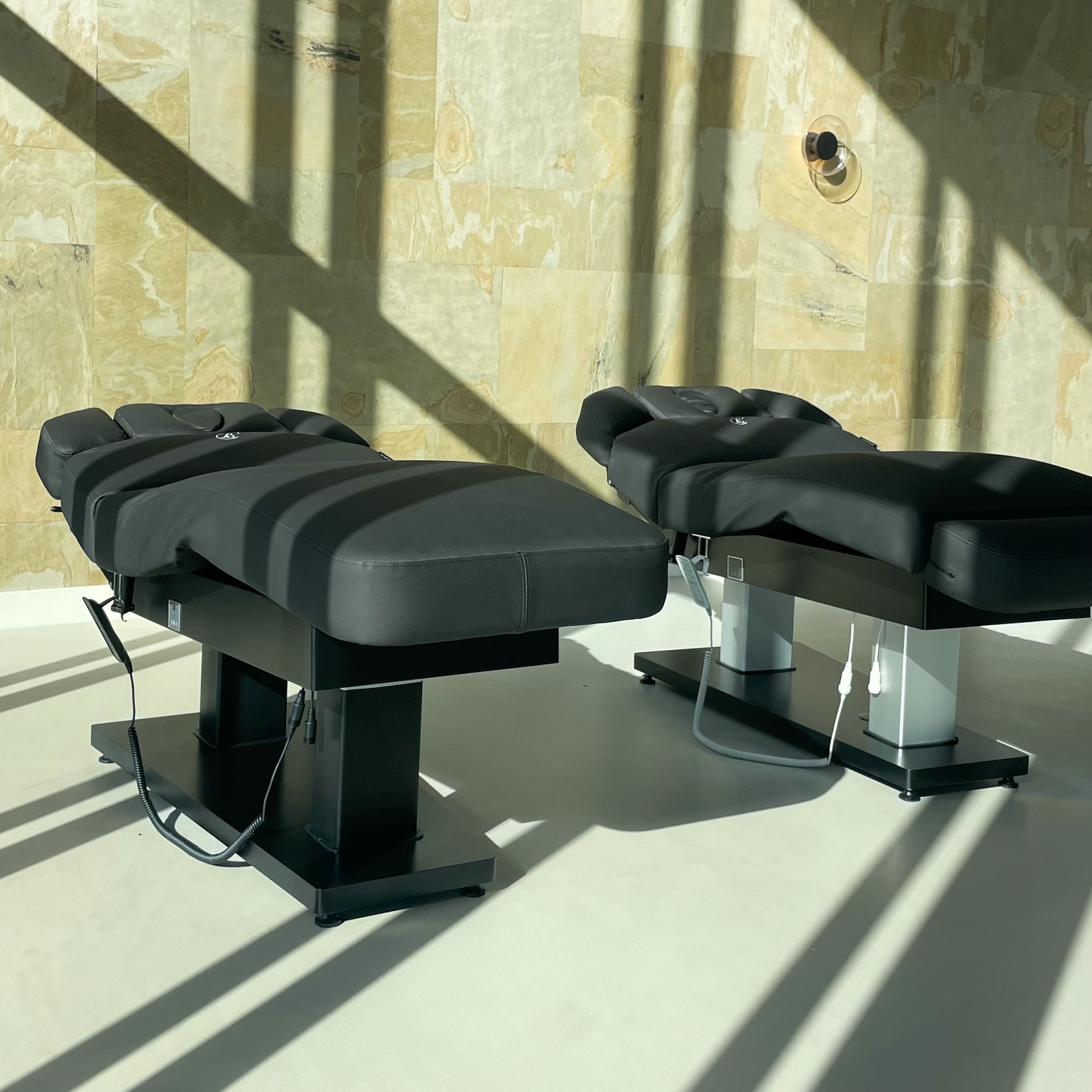Trend spotted!
Japandi interior design for your salon
Published on 09 September
Have you heard of the Japandi interior trend? This style has become a staple in many interiors and could be the perfect choice for your Japandi salon, clinic, or practice. Japandi combines the sleek simplicity of Japanese minimalism with the calm ambiance of Scandinavian design. This makes it an ideal choice for spaces where tranquility and balance are key.
Skin lab by Iris is an example clinic that we believe falls beautifully within the Japandi interior style. We show you how they did it and give practical tips to use this trend in your business as well.
©Skin lab by Iris
The key features of
a Japandi interior
Japandi is characterized by simplicity, natural materials, and a neutral colour palette. Here is an overview of the most important elements for a Japandi salon:
- Natural materials: In a Japandi interior, materials like wood, rattan, and stone are commonly used. These materials create a calm, natural look and form the foundation of the interior design.
- Neutral colours: The Japandi colour palette predominantly features neutral tones like white, beige, and taupe. Bright colours are avoided to maintain a calm, harmonious atmosphere.
- Minimalist design: Japandi is all about minimalism. Accessories are kept to a minimum and chosen for their functionality. This ensures a clean and peaceful environment in your Japandi salon.
- Organic shapes: Organic, rounded shapes are often incorporated into the design, adding softness to the clean lines and giving the space an inviting character.

Skin Lab by Iris:
Japandi in practice
Skin Lab by Iris is a clinic that has fully embraced the Japandi interior. From the moment you step inside, you feel the calm and serenity this style brings. The neutral colour palette is complemented by light wooden furniture, soft textures, and carefully selected Japandi accessories. Plants and minimalistic touches add just enough life to the space without disrupting its tranquil vibe.
What makes this clinic so inspiring is how they manage to combine Japandi's minimalism with a warm, welcoming feel. This is exactly what clients appreciate: a space where they immediately feel at ease, and where the interior contributes to a relaxing experience.

How to create a Japandi Salon
The Japandi style can easily be incorporated into salons and clinics. Here are some practical tips for designing your Japandi salon:
- Colour palette: Keep the colours calm with neutral shades such as white, sand, and taupe. Contrast can be added through different textures, like a wooden piece of furniture combined with a stone sink.
- Minimalist décor: Keep accessories to a minimum and choose functional, high-quality items. Let the space speak through its simplicity.
- Natural elements: Add plants or accessories made from natural materials to keep the space lively without disrupting the peaceful atmosphere.
- Organic shapes: Rounded shapes can be incorporated into mirrors or side tables to emphasize the softness of the design.

Which Wellness bed suits this interior?
Velvet Evo W4 Incl. heating
The Velvet Evo W4 is a multifunctional wellness bed, perfect for body and facial treatments. Its sleek design fits perfectly in a Japandi interior.
Velvet Evo W4 Pro Incl. heating
The Velvet Evo Pro is a wellness bed that offers ultimate comfort. This model features foldable armrests and a maximum working height of 105 cm.
Fasano W3 Incl. heating
The Fasano W3 is a wellness bed known for its look yet remains compact. This bed is ideal for facial and laser treatments, and its design aligns perfectly with a Japandi interior.

Wabi-Sabi vs.
Japandi interior
The Japandi interior style is a combination of Scandinavian design and the Japanese Wabi-Sabi philosophy. While both styles emphasize simplicity and functionality, there are also clear differences.
- Philosophy vs. style: Wabi-Sabi is a Japanese philosophy centered around accepting imperfection and transience, while Japandi is an interior style combining elements of both Scandinavian minimalism and Japanese design.
- Colour palette: Wabi-Sabi uses darker, earthy tones, whereas Japandi emphasizes lighter colours such as white, beige, and light wood.
- Materials: Both styles value natural materials, but Wabi-Sabi focuses more on raw, untreated materials like wood and stone, while Japandi incorporates sleek lines and polished materials.
- Shape and structure: Wabi-Sabi embraces asymmetry and irregularities, whereas Japandi focuses on symmetry, simple forms, and a clean, minimalist look.





